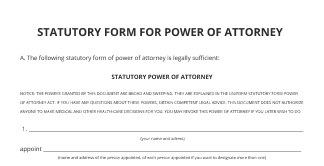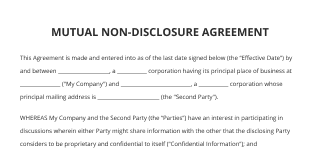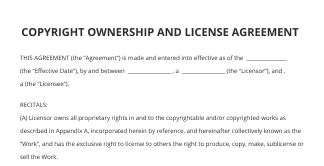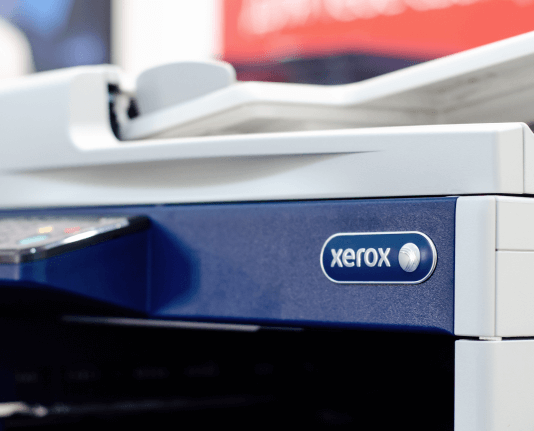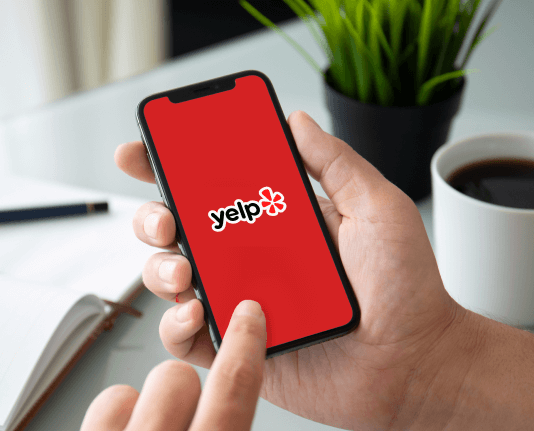Logiciel De Proposition Pour La Construction Dans L'enseignement Supérieur Qui Rationalise Votre Flux De Travail
Faites avancer votre entreprise avec la solution de signature électronique airSlate SignNow
Ajoutez votre signature juridiquement contraignante
Intégrez via l'API
Envoyez des documents conditionnels
Partagez des documents via un lien d'invitation
Gagnez du temps avec des modèles réutilisables
Améliorez la collaboration d'équipe
Découvrez les signatures électroniques airSlate SignNow en action
Solutions airSlate SignNow pour une meilleure efficacité
Les avis de nos utilisateurs parlent d'eux-mêmes






Pourquoi choisir airSlate SignNow
-
Essai gratuit de 7 jours. Choisissez le forfait dont vous avez besoin et essayez-le sans risque.
-
Tarification honnête pour des forfaits complets. airSlate SignNow propose des abonnements sans frais supplémentaires ni frais cachés lors du renouvellement.
-
Sécurité de niveau entreprise. airSlate SignNow vous aide à respecter les normes de sécurité mondiales.

Fonctionnalités airSlate SignNow appréciées par les utilisateurs
Obtenez des signatures juridiquement contraignantes dès maintenant !
FAQ proposal software for construction
-
Qu'est-ce que le logiciel de proposition pour la construction dans l'enseignement supérieur ?
Le logiciel de proposition pour la construction dans l'enseignement supérieur est une solution numérique conçue pour rationaliser le processus de création, de gestion et d'envoi de propositions dans le secteur de la construction, spécialement adaptée aux établissements éducatifs. Il améliore la collaboration et garantit la conformité aux normes académiques. En automatisant les flux de travail des propositions, il réduit considérablement le temps et l'effort nécessaires pour préparer et soumettre des propositions. -
Comment airSlate SignNow améliore-t-il le logiciel de proposition pour la construction dans l'enseignement supérieur ?
airSlate SignNow améliore le logiciel de proposition pour la construction dans l'enseignement supérieur en fournissant une plateforme facile à utiliser pour rédiger, modifier et signer électroniquement des propositions. Ses fonctionnalités incluent des modèles personnalisables et une collaboration en temps réel, permettant aux utilisateurs d'économiser du temps et des ressources. La plateforme offre également des mesures de sécurité avancées pour protéger les informations sensibles dans les environnements éducatifs. -
Quelles sont les principales fonctionnalités du logiciel de proposition de airSlate SignNow pour la construction dans l'enseignement supérieur ?
Les principales fonctionnalités du logiciel de proposition de airSlate SignNow pour la construction dans l'enseignement supérieur incluent les signatures électroniques, les modèles de documents, les outils de collaboration en équipe et l'intégration avec des systèmes de gestion de la construction populaires. Ces fonctionnalités permettent aux établissements éducatifs de rationaliser leurs processus de proposition, d'améliorer la précision et d'assurer des approbations plus rapides. L'interface conviviale de la plateforme la rend accessible à tous les membres de l'équipe. -
Une période d'essai gratuite est-elle disponible pour le logiciel de proposition de airSlate SignNow pour la construction dans l'enseignement supérieur ?
Oui, airSlate SignNow propose une période d'essai gratuite pour son logiciel de proposition pour la construction dans l'enseignement supérieur, permettant aux utilisateurs d'explorer ses fonctionnalités sans engagement. Cette période d'essai permet aux établissements éducatifs d'évaluer comment le logiciel peut améliorer leurs processus de proposition avant de faire un investissement financier. Inscrivez-vous dès aujourd'hui pour découvrir l'efficacité de notre solution ! -
Quelles options de tarification sont disponibles pour le logiciel de proposition de airSlate SignNow pour la construction dans l'enseignement supérieur ?
airSlate SignNow propose des plans tarifaires compétitifs pour son logiciel de proposition pour la construction dans l'enseignement supérieur, conçus pour répondre aux besoins des établissements de toutes tailles. La tarification inclut généralement des modèles d'abonnement par niveaux en fonction du nombre d'utilisateurs et des fonctionnalités, assurant une flexibilité pour les budgets éducatifs. Les établissements peuvent choisir un plan adapté à leurs besoins spécifiques et évoluer à mesure que leurs exigences changent. -
Le logiciel de proposition de airSlate SignNow pour la construction dans l'enseignement supérieur peut-il s'intégrer à d'autres outils ?
Absolument ! Le logiciel de proposition de airSlate SignNow pour la construction dans l'enseignement supérieur est conçu pour s'intégrer parfaitement à diverses applications tierces, y compris les systèmes CRM, les outils de gestion de projet et les services de stockage cloud. Cette flexibilité garantit que les établissements éducatifs peuvent incorporer le logiciel dans leurs flux de travail existants sans problème, améliorant ainsi l'efficacité globale. -
Quels sont les avantages de l'utilisation d'un logiciel de proposition pour la construction dans l'enseignement supérieur ?
L'utilisation d'un logiciel de proposition pour la construction dans l'enseignement supérieur offre plusieurs avantages, notamment une réduction de la charge administrative, une augmentation de la précision des propositions et des délais de traitement plus rapides. En automatisant les tâches répétitives et en permettant une collaboration facile, les établissements éducatifs peuvent se concentrer sur des objectifs prioritaires tout en garantissant que leurs propositions soient professionnelles et compétitives. De plus, les signatures électroniques permettent des approbations plus rapides et améliorent les délais des projets. -
Quelle est la sécurité du logiciel de proposition de airSlate SignNow pour la construction dans l'enseignement supérieur ?
La sécurité est une priorité absolue pour le logiciel de proposition de airSlate SignNow pour la construction dans l'enseignement supérieur. La plateforme utilise des normes de cryptage avancées et respecte les réglementations de protection des données, garantissant que tous les documents et signatures sensibles sont bien protégés. Les établissements éducatifs peuvent faire confiance à la confidentialité et à la sécurité de leurs informations dans toutes les transactions.
Ce que disent les utilisateurs actifs — proposal software for construction
Recherches associées à proposal software for construction
Proposal software for construction for Higher Education
Do you have a project idea that you want to get approved by senior management or even your client? Well in this video, I'm going to share with you how to write a project proposal. No, better yet, a winning project proposal. So if you're interested in writing a really awesome project proposal, then stay tuned to the end because I have something really cool to share with you, which is the of fundamentals of project management. Because with every project proposal, there's a project at the end of it. And this free training is going to help you so stay tuned. Hi, if you're new here, welcome. My name is Adriana Girdler and on this channel, you're going to learn the best project management and career advice coming to you weekly. So please consider subscribing as it helps this community grow, which is an awesome community to boot. Now, if you're interested in learning more about project proposals, let's get to it. What is a project proposal? A project proposal is a document that lays out key concepts and ideas that you present to a decision maker to see if those concepts and ideas, usually born out strategy, are going to proceed into a project. Now I write tons of project proposals for my clients and it really is a very succinct way of doing it. Now I'm going to share with you what I put in my project proposals that always leads to the project moving forward. Section one, project information. This is really important because it sets up what is it that you're presenting? It gives the needed information so the decision maker can understand the why this is even being requested. So there's a few things that I put in here. The first thing that I do for sure is what is the project name? Now don't worry about it being the final name because that's not necessary, but what is it that you want to call it so you all are on that same page? Second piece of information is the project background information or the idea background information. Why is this idea even coming to the table? Is it linked to strategy? Is there a problem that has to be fixed? Is it an opportunity? So that becomes really important because that's the justification as to why you're even putting together this project proposal. You also want to talk about the objective. So what is the project objective? What are you looking to accomplish? So that's why you need the justification first and then you link it to the objective. Really, what are you hoping and wanting to get out of this project once it's completed? Now also want to consider the scope parameters. So this becomes really important. What's going to be in? What's going to be out? There's a lot of assumptions when it comes to projects. So in this proposal you want to really identify what's in, what's out, just so that everyone's on that same page because decision makers may have assumptions. And if they understand what's in and out, then they can make the right decision and everyone will be on that same page from day one, which is really important. And last but not least, you may want to consider this. You may or may not have the information for this, but that's project resourcing. If you're looking for a project proposal, you may know automatically about who and how many people need to be involved. If you are going to make a decision about this project, whether it should move forward, this idea that's linked to a strategy. It doesn't happen by itself. It needs resourcing. So giving a high level idea as to who you need is really important. So that's all in the body of the project information. Section two, project methodology/approach/ okay, this is really important because when you have an idea and you want to bring it to fruition, how are you going to bring it to fruition? What do you think is going to have happen in order to it occur? Do you need workshops? Do you need brainstorming sessions? Are you just going to have a formalized project team? So this is where you think about what is it that you are trying to do? The objective, and the justification behind it in the first section, and how are you going to make that come to life? So it may be combination of things. You may need to have some workshops to talk about requirements and brainstorming sessions. And once that's done, you're going to formalize it with a project idea or a plan. Again, it really is dependent upon what you're trying to achieve, but you really do have to lay it out. Do you have to do a discovery to really get into detail? Is there more research that has to occur to lay or to set up what you're going to do? Are you going to put in some points in time where you're going to have approvals of go, no go, or yes go on items and activities? So it's really high level. What's the approach that you would like to take in order to see this from start to finish? Section three, assumptions. Now you already heard me talk about assumptions in the project information stage, but that's not where you put it. You put it here. So you do your project information, you talk about your methodology and approach and then you do your assumptions. Why? Because it's not just assumptions on the project information. It's also assumptions in your methodology that becomes really important for you to call out. Because your methodology, for example may be we're going to have brainstorming sessions, but they're going to be in person brainstorming sessions. And with how we work today, there's a lot of virtual activities that go on. So you don't want people to assume that your brainstorming session is virtual. You may decide that it really needs to be in person. So you have to ensure that you call out that assumption. This is, all workshops are going to be in person. That totally changes how you do things, the cost of things, who's going to be involved, et cetera. So that's why it's critical at this point, review what you've done and pull out all the assumptions. Just don't assume it's going to help you at this stage in this project proposal to get that nailed to the best of your ability. So do focus on assumptions. Section four, key deliverable or deliverables, it's depending on getting what you're doing. So in this section, this actually, in my proposals are a very small section, because I'm basically telling to my client, what are you getting at the end of this? So for example, if I am doing a process improvement project and we have tons of activities, like we have to do workshops and we have to do current state and future state maps, and we have to get gap analysis. Really the deliverable at the end of everything is a simple one liner. It's a report that they're going to get, which outlines a future state map and the gap analysis that we were asked to do. That's it, it's a report. That's a deliverable at the end of this. With everything that we're doing, they're going to physically get that. So that becomes really important. And even if like you're doing machinery, it would be that machinery that is going to be the deliverable. If you are installing a new packaging line, it's going to be that packaging line, that's a deliverable. It just sets it out so everybody knows what am I getting at the end of this? And usually when you're getting something, it's something tangible. Section five, project timeline. What? Adriana, aren't we just creating a project plan right now? No, no, we are not. When you're doing a proposal and you're trying to get people convinced to your idea, one of the big things they need to know is, well, how long is this going to take? Is it going to take two weeks, three months, two years? Because there are project proposals and ideas that do take a really long time. So you have to lay it out and you just want to give very high level milestones as to what you think it's going to take in order to get this to fruition. So very high level, you're not doing anything detailed, just saying overall arching timeline as to what you think is going to have happen. Section six, project costs. It's all about the money. Let me tell you, this is really important at this stage. I know for clients, sure, they love me, they're excited to have me on board. They know I do a good job, but it really comes down to the money. How much is all this going to cost? Because do I have it in my budget to execute? So some of the things you want to consider from a cost perspective is what are your resource costing? Do you have to hire people outside? Is there associated resource costing internally to bring people on this project? Are there any fixed costs? Like do you have to purchase something specifically like a software or piece of equipment? So what are those fixed costs? Is there any direct costs associated with the project? Do I have to travel to do my in person workshop? Do we have to have hotel costs? What about getting food for that workshop? Those are all those related items, and there even may be more costs depending on what you're doing. But you need to really, again, high level at this point, saying here's what the potential cost is going to be because people are making a decision. Do I move forward with this or not? And it always does come down. Money plays a big part of proposals. So definitely take time and think this out. You don't need the details yet, in regards to line by line item, because you're not at a project stage yet of initiation and planning, which will definitely vet that out more. But you're here from a proposal perspective. So you do have to highlight what those things are. Section seven, project proposal acceptance and acknowledgement. Okay. This is a very simple section. Basically, it's the sign off that everyone agrees to what's in the proposal and they're going to sign off with this project moving forward. So it's like a contract. I am agreeing to move forward on this. I, as the project proposal creator saying, yes, I agree with all this and the owner, client or senior executive is going to sign off on it as well. It just ensures that everyone agrees and you have that written proof. Congratulate yourself. Okay. Yay. You just got a proposal accepted. That's huge. Oh my goodness. Do not ignore that. Celebrate. Go out for lunch. I usually buy myself something a little small to say, oh my gosh, look what a great job I did because that is so cool. A project and idea is now moving forward, and you're probably the one that's going to be running it. So yay. Now remember what I said, these are project proposals and I already hinted that it's not the project plan. So I would like for you to go in the link below and check out that free training because there is so much now that you need to do, you have to start an initiation stage to move this concept and idea into the project framework. And there's a lot of cool stuff that you learn. So definitely, it's under this video, that link, check it out. If you learned something new here today, please tell us in the comments below. We'd love to hear if there's anything else that you've added in your project proposals, or if you use this framework, how did it go for you? Please like this video, subscribe to this channel. It really tells YouTube that you like our content, allowing us to grow this community and really get more great content out to you. So on that note, see you next time with the next video, thanks.
Show moreObtenez plus pour higher education construction software
- Facture électronique pour le marketing
- Facture électronique pour la logistique
- Facture électronique pour les opérations
- Simplifiez votre entreprise avec la facture électronique pour la planification
- Facture électronique pour l'achat
- Facture électronique pour l'assurance qualité
- Facture électronique pour l'ingénierie
- Simplifiez votre facture électronique pour l'exportation
Découvrez d'autres proposal software for construction
- Renforcez la légitimité de vos accords de licence ...
- Déverrouillez le pouvoir de la légitimité de la ...
- Assurer la légitimité de la signature électronique ...
- Légitimité de la signature électronique pour ...
- Légitimité de la signature électronique pour ...
- Déverrouillez la légitimité de la signature ...
- Légitimité de la signature électronique pour ...
- Déverrouillez la légitimité de la signature ...
- Déverrouillez la légitimité de la signature ...
- Déverrouillez le pouvoir de la légitimité de la ...
- Légitimité de la signature électronique pour ...
- Déverrouillez la légitimité de la signature ...
- Améliorez la légitimité de la signature ...
- Déverrouillez le pouvoir de la légitimité de la ...
- Débloquez des solutions de signature électronique ...
- Améliorez la légitimité de la signature ...
- Déverrouillez la légitimité de la signature ...
- Renforcez la légitimité de la signature électronique ...
- Légitimité de la signature électronique pour l'acte ...
- Légitimité de la signature électronique pour l'acte ...





